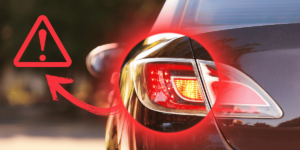When the engine is going, your car won’t shift into gear. This is annoying and could even be dangerous. Don’t worry, though! This usually takes place for a few common reasons, and most of them are pretty easy to fix.
1. Automatic Transmission
- Bad sensor or coupling connection: This could be because the wire is corroded, dirty, or loose.
- A broken linkage wire or brake switch can make it impossible for the car to start or shift into gear.
- Bad automatic transmission oil: If the fluid is dirty or contaminated, the transmission may not work right.
2. Manual Transmission
- Clutch master or slave cylinder: These cylinders work together to make the clutch pedal work or not work. They can break down from heavy use or moving too quickly.
- The linkage is broken or detached. This happens more often in older cars and can be caused by dirt or road salt.
- A damaged clutch disc or pressure plate: These parts will wear out over time and need to be replaced.
How to Figure Out What’s Wrong?
A skilled mechanic is the best person to take your car to if you’re not sure why it won’t shift. They’ll be able to figure out what’s wrong and suggest a way to fix it.
But there are some things you can do to try to figure out what’s wrong:
- Check the level of the transmission fluid. The problem could be that the fluid is dirty or the level is too low.
- Check the pedal for the clutch: Some issues with the clutch master or slave cylinder could cause the clutch pedal to feel soft or mushy.
- Put the car in gear while the engine is off: If you can change gears when the engine is not running, the issue is probably with the transmission connection.
How to Diagnose the Problem?
The problem’s cause will determine how to fix it. There will be a need to flush or change the transmission fluid if that is what is wrong. It is necessary to repair the clutch master or slave cylinders if they are experiencing issues. We will have to fix or replace the transmission linkage if that is what is wrong.
However, there are a few things you can do to try to diagnose the problem yourself:
Before transmission problems happen, here are some things you can do:
- Change or flush your transmission fluid often. This will help keep the transmission clean and well-oiled.
- Do not step on the clutch button; this can damage the clutch parts more than it needs to.
- Shift smoothly: Don’t change gears too quickly or rough.
- Regularly checking your transmission will help you find and fix any problems before they get worse.
Frequently Asked Questions
Q: Why does my car sometimes go into gear but not move?
A: This typically happens when there’s a problem with your clutch not disengaging properly, causing a partial power transfer even when you shift gears correctly.
Q: Can I continue driving if my clutch pedal feels soft or doesn’t fully disengage?
A: It’s not advisable. Driving with a malfunctioning clutch can lead to further damage and safety risks. Get it checked and repaired promptly.
Q: How often should I check my hydraulic fluid levels?
A: It’s a good practice to check your hydraulic fluid levels during routine maintenance, or if you notice any symptoms of clutch or shifting issues.
Q: Can I fix a broken shifter cable myself?
A: Repairing or replacing a shifter cable typically requires mechanical expertise, so it’s best to consult a professional mechanic.
In conclusion
Don’t worry if your car won’t shift gears when the engine is going. A common issue that isn’t too hard to fix is probably what’s wrong. Taking your car to a skilled mechanic will help you figure out what’s wrong and how to fix it.








